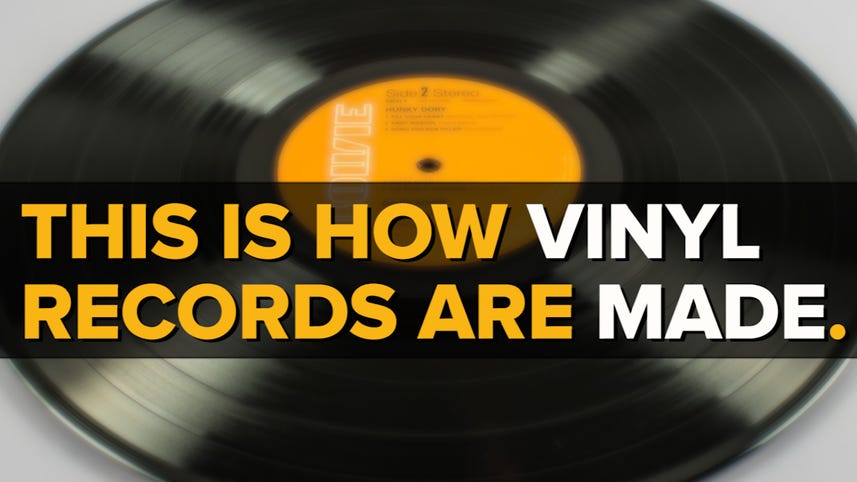
[SOUND]
This is how vinyl records are made.
First you have to record an album.
The track you're hearing now was called To Be Free Is To Be Lonely, recorded by Tim Bluhm of The Mother Hips.
Once your song is recorded then you have the track professionally mixed and mastered for vinyl.
Next, Grooves are cut into what's called a master lacquer disc.
These grooves represent the sound of the recorded music.
[MUSIC]
The record player's needle runs over these grooves, creating an electric current that is amplified through the speakers.
In this photo, technicians monitor the record lathe while it cuts the master lacquer.
The master lacquer is then sprayed with silver and then dipped into a nickel bath.
[MUSIC]
The nickel adheres to the disc in a process known as electroplating.
Electroplating creates what's known as a metal master.
The Metal Master is then pulled apart showing how each side is a mirror image of the other.
One side has grooves while the other side had ridges.
The side with the ridges is known as a metal stamper.
The stamper is refined a bit to fit into the record-pressing machine The stamper is then inspected further with microscopic precision.
These black vinyl pellets will be superheated and formed into a hockey puck-shaped gooey biscuit.
The stamper is mounted into the press, and a fresh biscuit is placed on top.
The super hot vinyl is flatted while the stamper's ridges press into it, creating the grooves of the record.
And finally you have a stack of freshly pressed vinyl records.
You can read more about how vinyl records are made and check out the photo gallery at cnet.com.